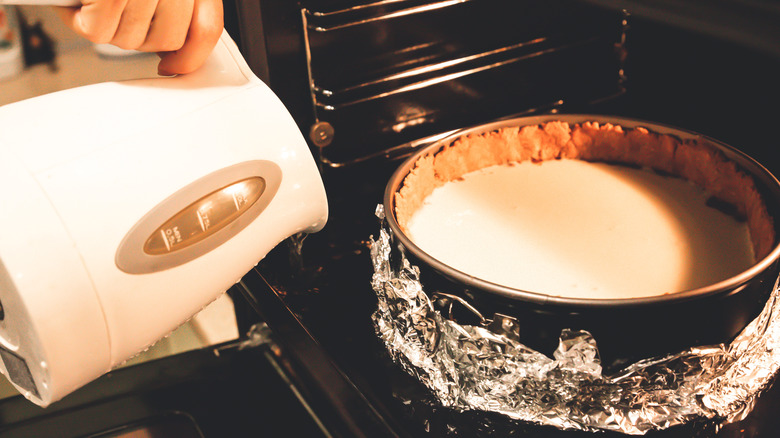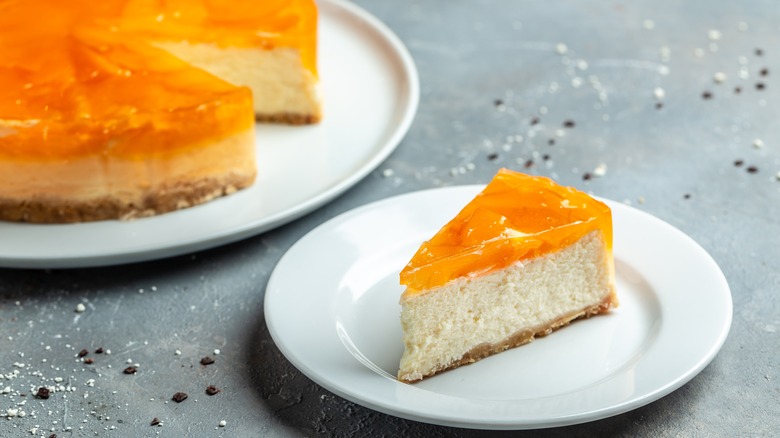Do You Need A Water Bath When Making Cheesecake?
Though it masquerades in the dessert world as a cake, cheesecake is really not a cake at all, as it is not made with flour. There's even debate about whether cheesecake is considered a pie because it contains a custard-filled crust.
However you want to define cheesecake, it's a sweet, creamy, and luscious dessert that anyone can get behind. There are many kinds of cheesecake: classic, New York, Basque, Japanese "cotton," ricotta, no-bake, vegan, and more. Though the ingredients in a classic cheesecake are pretty simple, the baking process can be finicky.
Traditionally, cheesecake is baked in a water bath, also called a bain marie — a deep vessel filled with water that the foil-lined spring-form pan sits in while it bakes in the oven. The main reasons for using a water bath are to prevent cracking and deflating. Water introduces moisture into the oven and steams the cheesecake, distributing heat evenly and gently around it. The water also retains heat which helps the cheesecake cool slowly once removed from the oven, preventing the custard from deflating when moving from a hot to a cool environment.
Without the water bath, there is a greater risk of the cheesecake splitting, sinking, or burning. But let's be honest, water baths can be the bane (marie) of a home baker's existence. So is it possible to make a delicious cheesecake without it?
Can you do without the bath? The answer is a resounding yes!
Basque cheesecake, a.k.a. burnt cheesecake, follows a slightly different process than classic cheesecake and doesn't involve a water bath. Basque cheesecake doesn't have a crust and the "custard" filling contains a small amount of flour, making it more of a soufflé. It's also cooked at a higher temperature to promote caramelization on the top and bottom, forming its own crust to encase the light and creamy center.
But if you are a devotee of the slices served at places like The Cheesecake Factory, there are several no-water bath classic recipes that use different techniques to prevent cracking. Both AllRecipes and Lauren's Latest call for leaving the cheesecake in the turned-off oven after it's done baking, propping the oven door open with a wooden spoon to ensure the cheesecake cools gently with no cracks or sinkage.
Another issue that contributes to surface cracks is the cheesecake's crust sticking to the pan. This top-rated recipe by Sugar Spun Run advises running a knife around the inside of the springform pan to release the crust after the finished cheesecake has cooled for 10 minutes. The cheesecake will shrink slightly while cooling and if the crust can't pull away from the pan during this process, the filling will crack.
Though baking cheesecake in a water bath may give you a little more insurance for a crack-free pie, there are other techniques that can be applied so you can confidently ditch the water bath for a more enjoyable baking experience.

